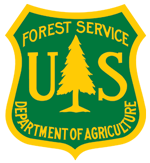News
Mark Ford: Virginia Cooperative Fish and Wildlife Research Unit
Mark Ford, Unit Leader of the Virginia Cooperative Fish and Wildlife Research Unit, discusses his research on threatened, rare, and endangered species, how the LCC can link up various expertise around the region, and the types of science needs the Cooperative can address that will result in on-the-ground conservation.
Marquette Crockett: Canaan Valley National Wildlife Refuge
Wildlife biologist Marquette Crockett (formerly of the Canaan Valley National Wildlife Refuge) talks about the unique habitats and common problems that stretch across the Appalachians and how Appalachian LCC meetings are developing relationships and products that will help conservation in National Refuges.
Braven Beaty: The Nature Conservancy - Clinch Valley Program
Braven Beaty discusses his work in the Appalachian region with mussels, the biological importance of the Clinch-Powell River Basin, and how the Appalachian LCC helped to preserve freshwater mussel populations.
Downscaling Scenarios of Climate Change Project to Map Entire Appalachian LCC Region
A DOI Southeast Climate Science Center funded project will be evaluating the latest generation of global climate models to generate scenarios of future change to climate, hydrology, and vegetation for the Southeastern U.S. as well as the entire range of the Appalachian LCC.
Welcome Home, Winged Mapleleaf Mussel
An endangered mussel came home to a Tennessee River last week, a monumental reintroduction effort seven years in the making. On Wednesday, federal and state biologists placed 103 winged mapleleaf mussels in the middle portion of the Duck River. The last time the species was seen in the river was more than two decades ago, when empty shells were collected in 1990 and 1991.
Virginia’s Climate Modeling and Species Vulnerability Assessment
The National Wildlife Federation (NWF) is excited to announce the publication of Virginia’s Climate Modeling and Species Vulnerability Assessment: How Climate Data Can Inform Management and Conservation. This report is the culmination of over 4 years of effort by NWF, Virginia Department of Game and Inland Fisheries (DGIF), Conservation Management Institute, and Kutztown University to downscale climate data for Virginia and use that in a species modeling effort to project how a selections of species (wildlife, fish, and plants) may change their distribution across the landscape based on climate change.
LCC National Council Convening
The U.S. Institute for Environmental Conflict Resolution is currently convening the Landscape Conservation Cooperatives (LCC) National Council, and is currently accepting nominations for one LCC participant on the Council.
U.S. Fish and Wildlife Service Identifies Critical Habitat for Diamond Darter
The endangered diamond darter, a tiny fish that has faced serious threats to its home, depends on 123 miles of habitat for its survival, the Service today announced. Once found along the southern Appalachians from Ohio to Tennessee, this native darter has been restricted to one stream along the Elk River by years of changes from dams, water quality degradation and other threats.
Partners in Flight Consortium Seeks Solutions to Migratory Bird Declines
Scientists who have spent decades trying to reverse the broad decline of migratory birds in the Americas will converge by the hundreds later this month in Snowbird, Utah, to seek solutions to the threats migratory birds are facing at northern breeding grounds, southern wintering grounds, and numerous migration stopovers.
Position Available - Interdisciplinary (Air and Water Program Manager) Ecologist or Physical Scientist
This is a natural resource management position located in the Natural Resources Branch, Division of Natural and Cultural Resources at Shenandoah National Park. The Air and Water Quality Program Manager engages in the study, inventory, monitoring, restoration, and management of air resources /air quality, associated ecological components such as water quality, fisheries, vegetation and wildlife impacts in addition to associated visibility components, and tropospheric ozone.
Conservation Planning Process
Dr. Robert Baldwin of Clemson University explains in this video the steps involved in the conservation planning process.
New LCC National Network Coordinator Selected
Dr. Elsa Haubold replaces Dr. Doug Austen, who served as national coordinator for 3 years.
Beyond Season's End
A website created for wildlife and fisheries professionals confronting the threat of global climate change.
Native Plants Boost Conservation Benefits, Strengthen Wildlife Populations
Native plants in many parts of the U.S. are struggling because of changes in land use and climate, posing problems for the wildlife species that depend on them for sustenance and sanctuary.
Endangered and Threatened Fishes Return to Home Waters in Tennessee
Five federally endangered and threatened fish species – smoky madtom, yellowfin madtom, duskytail darter, spotfin chub, and boulder darter – have been reintroduced to streams in central Tennessee where they were once found to help speed their recovery.
Service Report: Nation’s Rivers Flow toward Better Habitat, Economies and Public Safety
More than 200 blockages in the nation’s major natural resource “arteries” were removed last year thanks to the U.S. Fish and Wildlife Service’s National Fish Passage Program. Working with numerous partners, the program improves fish passage, local economies and public safety by ridding the nation’s rivers of derelict dams that no longer serve a purpose.
Forest Service Awards $44.2M to Conserve At-Risk Forests
Forest Service Chief Tom Tidwell announced the award of $44.2 million in grants to permanently protect 16 working forests in 15 states, including a project that will protect 8,000 acres of working forestland in the Blue Ridge Mountains of North Carolina and another project to protect 1,100-acres located in Franklin County, PA and containing a stretch of the Appalachian National Scenic Trail.
USDA, Interior and Defense departments partner to benefit agricultural lands, wildlife habitat and military readiness
Agriculture Secretary Tom Vilsack, Interior Secretary Sally Jewell and Defense Acting Deputy Under Secretary for Installations and Environment John Conger announced today a federal, local and private collaboration that will preserve agricultural lands, assist with military readiness and restore and protect wildlife habitat.
TWRA Announces Awarding of Grants for 2013-14 Stream Clean-up Projects
The Tennessee Wildlife Resources Agency (TWRA) has announced the awarding of grant dollars to assist cities, schools, community organizations, civic groups, watershed organizations, and conservation groups, etc., with stream clean-up projects for the fiscal year 2013-14.
U.S. Fish and Wildlife Service Boosts State Endangered Species Conservation Efforts with $32 Million in Grants
The U.S. Fish and Wildlife Service today announced nearly $32 million in grants to 20 states to help advance their collaborative efforts to conserve America’s rarest species. The cooperative grants will provide vital support to efforts by partnering state wildlife agencies and conservation organizations to improve the health of the land and water that supports these species and scores of communities across the nation.






















